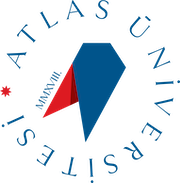| Course Objectives: |
To learn the general structure, molecular and genetic characteristics of a living organism, to understand the cell and its functions, to learn the metabolic reactions that occur in the cell, to understand the basic principles of heredity, to have knowledge about basic genetic and molecular genetic principles. |
| Course Content: |
Biology Science, Birth of Molecular Biology, Biological Molecules, Enzymes, Cellular Organization, Transport and Stimulus Transmission in Cell Membrane, Cellular Energy and Metabolism, Cell Cycle and Division, Week Growth and Development, Aging Biology, Structure of Genetic Material, Proliferation and Protein Synthesis, Mutation and Repair, Control of Gene Expression, DNA Technology and Applications, Genome Organization, DNA Sequences and Chromosome, Basic Principles of Inheritance, Hereditary Metabolic Diseases, Molecular Biology of Cancer. |
| Week |
Subject |
Related Preparation |
| 1) |
Introduction to the Cell, Cell Structure and Types (Prokaryotic and Eukaryotic Cells) |
PPT prepared for the lesson |
| 2) |
Structure and Function of Cell Membrane, Transport Mechanisms (Endocytosis, Exocytosis) |
PTT prepared for the lesson |
| 3) |
Microscope Training |
PPT prepared for the lesson |
| 4) |
Structure and Functions of Cell Organelles |
PPT prepared for the lesson |
| 5) |
Cell Skeleton (Centriole, Microtubules, Filaments, Cilia, Flagella) |
PPT prepared for the lesson |
| 6) |
Investigation of Cell Morphologies Preparation of Preparations |
PPT prepared for the lesson |
| 7) |
Midterm Exam |
|
| 8) |
Nucleus Structure and Functions, Molecular Mechanisms of Nuclear Transport |
PPT prepared for the lesson |
| 9) |
Genetic Materials; DNA, From DNA to Chromosome; Packaging of DNA
DNA – RNA Structure, Function and Gene, Genetic Code |
PPT prepared for the lesson |
| 10) |
Replication, Transcription, Translation |
PPT prepared for the lesson |
| 11) |
Cell Cycle, Mitosis-Meiosis Division Mechanisms Controlling Cell Cycle |
PPT prepared for the lesson |
| 12) |
Genetic Concepts, Mendelian Inheritance-Non Mendelian Inheritance |
PPT prepared for the lesson |
| 13) |
Mutagens and Mutations DNA Damage and Repair Mechanisms |
PPT prepared for the lesson |
| 14) |
Nutrigenetic |
PPT prepared for the lesson |
| 15) |
Nutrigenetic |
PPT prepared for the lesson |
| 16) |
Final Exam |
PPT prepared for the lesson |
| |
Program Outcomes |
Level of Contribution |
| 1) |
Explains the concepts and principles related to the field of Physiotherapy and Rehabilitation, physiotherapy assessment and treatment processes, defines the role of physiotherapy in the development and maintenance of health. |
|
| 2) |
Tells the laws, regulations and legislation regarding the professional duties, rights and responsibilities of the physiotherapist within the health system. |
|
| 3) |
Determines and applies the needs of healthy, sick and disabled individuals with appropriate measurement and evaluation methods using the knowledge of physiotherapy and rehabilitation. |
|
| 4) |
Plans, implements, makes the necessary changes, terminates and reports the individual-centered physiotherapy and rehabilitation program within the ethical framework by analyzing and synthesizing the data obtained by field-specific evaluations. |
|
| 5) |
With the knowledge of physiotherapy and rehabilitation, works and takes responsibility as a member of the transdisciplinary team in professional and academic studies to improve the health and quality of life of the society and the individual by using technology and evidence-based current approaches. |
|
| 6) |
To be able to use information resources effectively by adopting the principle of lifelong learning, to combine new knowledge with existing knowledge with a critical and analytical perspective and to reflect it to professional life. |
|
| 7) |
Uses effective communication strategies with patients and transdisciplinary teams in the field of physiotherapy and rehabilitation without discriminating language, religion, race and culture and uses at least one foreign language effectively. |
|
 BİLGİ PAKETİ / DERS KATALOĞU
BİLGİ PAKETİ / DERS KATALOĞU
